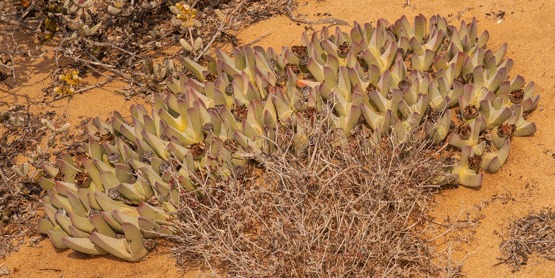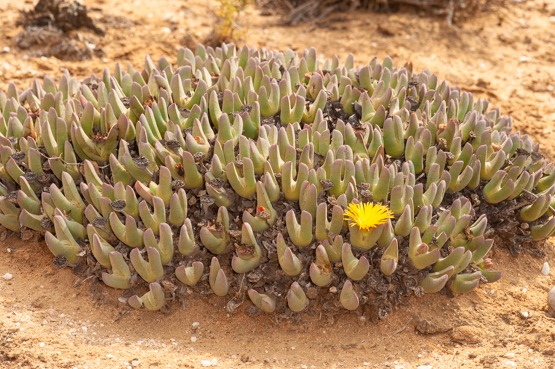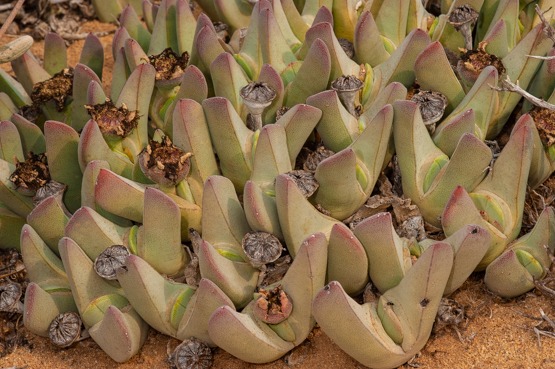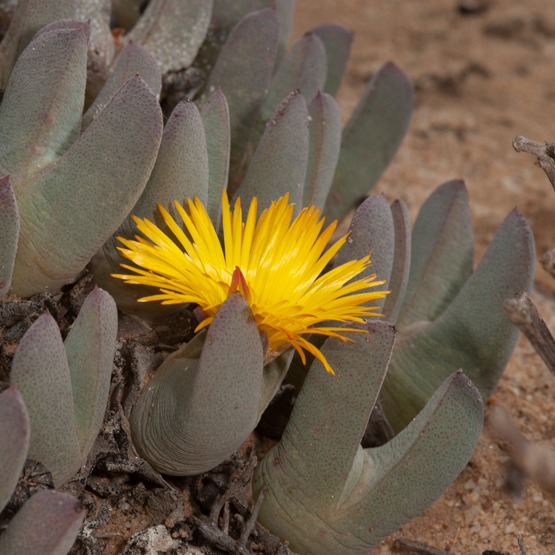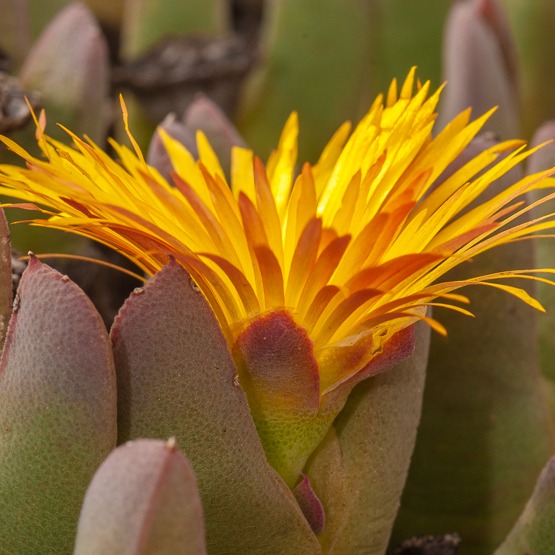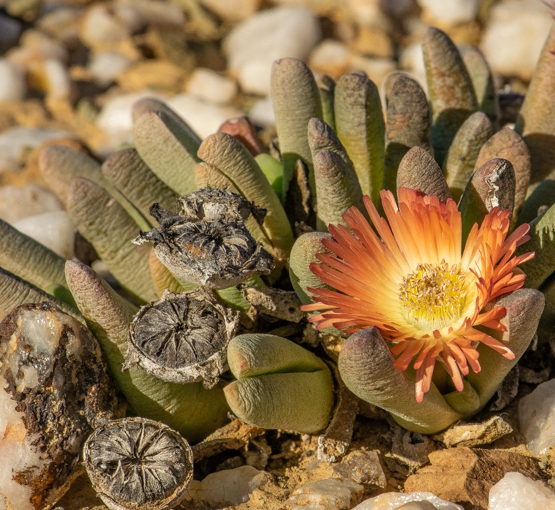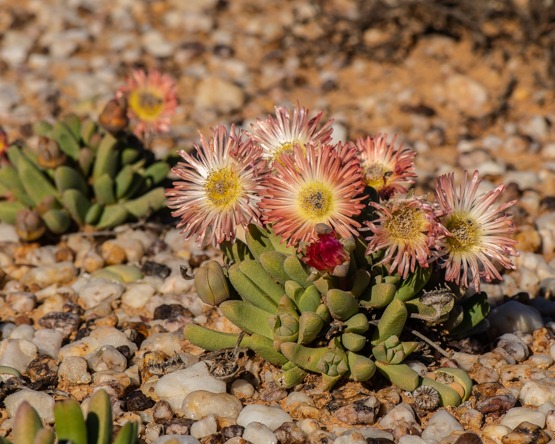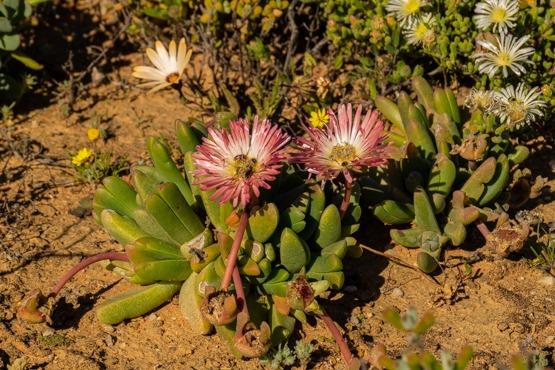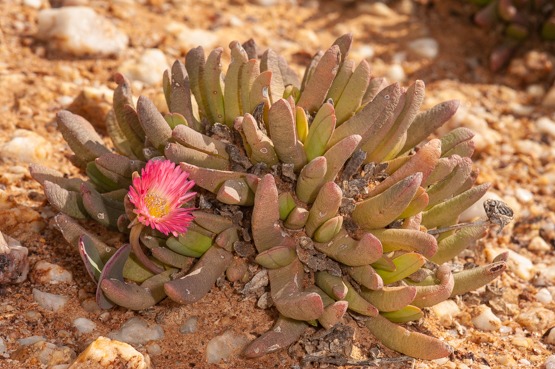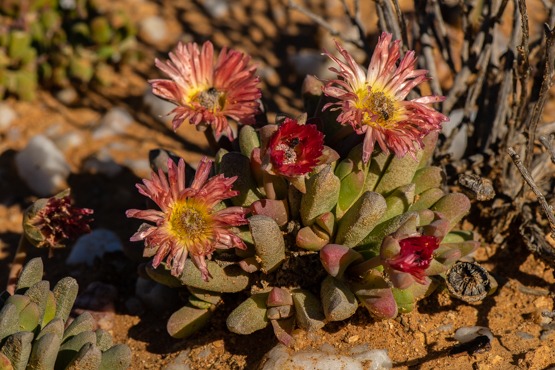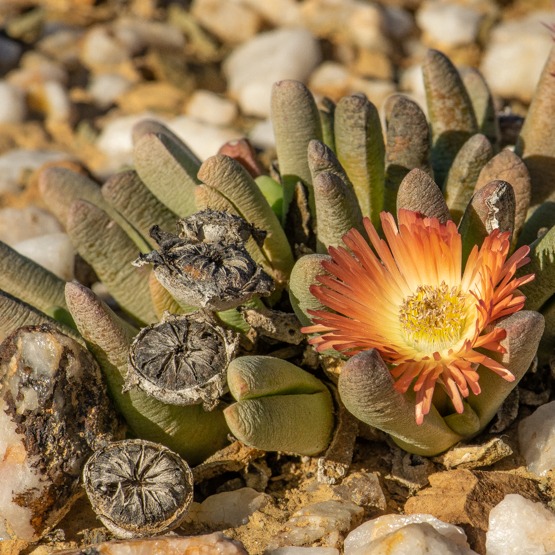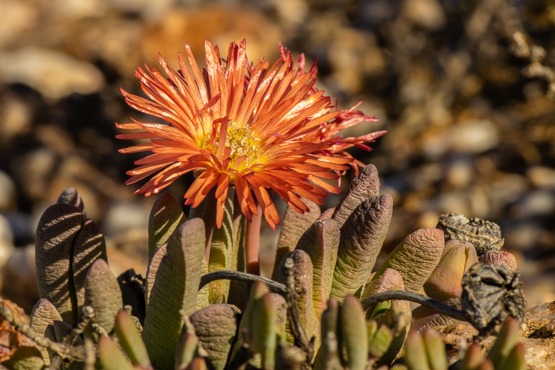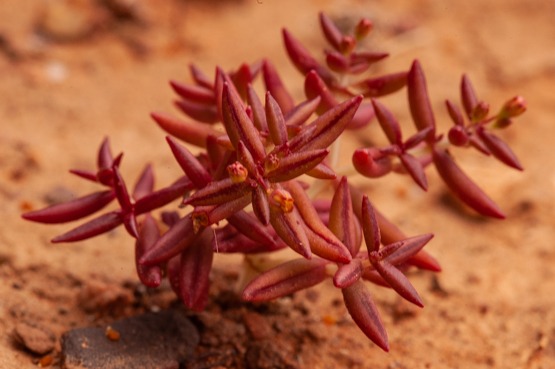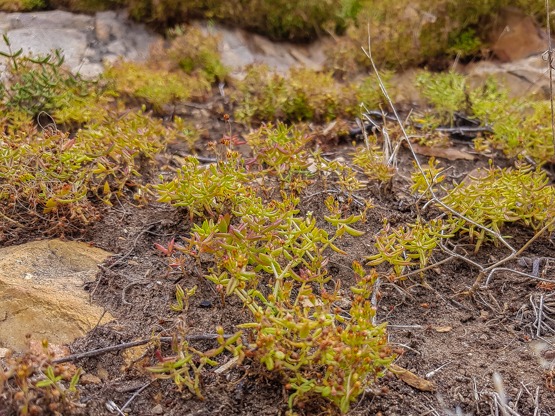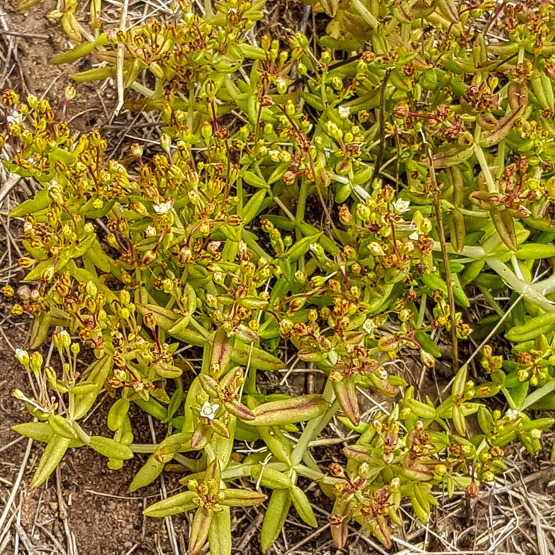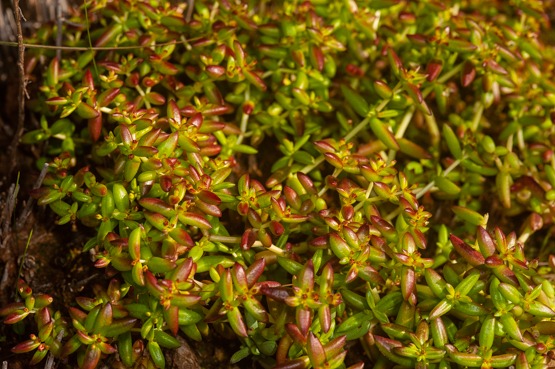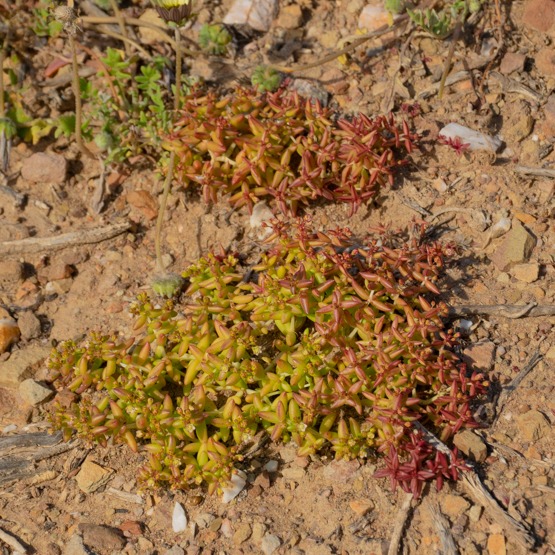C. robusta has a wide distribution which is probably the cause of its considerable variation in certain features. This in turn has led to a high number of synonyms (16 in total).
It is easy to cultivate and to flower, one of the reasons for it being probably the most common species of Cheiridopsis in cultivation.
The plants form loose clumps, 20 cm tall and up to 40 cm across.
Their leaves are mucronate*, 5-8 cm long and about 1.5 cm thick; triangular in cross-section, pale greyish blue to greyish green with a reddish tinge and decorated with translucent spots.
Flowers are 6 cm in diameter, cream to yellow to white , often with pink, purple or orange tinges; they appear in August-September.
C. robusta is very common in the Richtersveld and also occurs in Southern Namibia, both winter rainfall areas with less than 100 mm rain per year. It is mostly found on rocky/gravelly flats or slopes, below 600 m in altitude.
* Ending abruptly with a small triangular tip.
